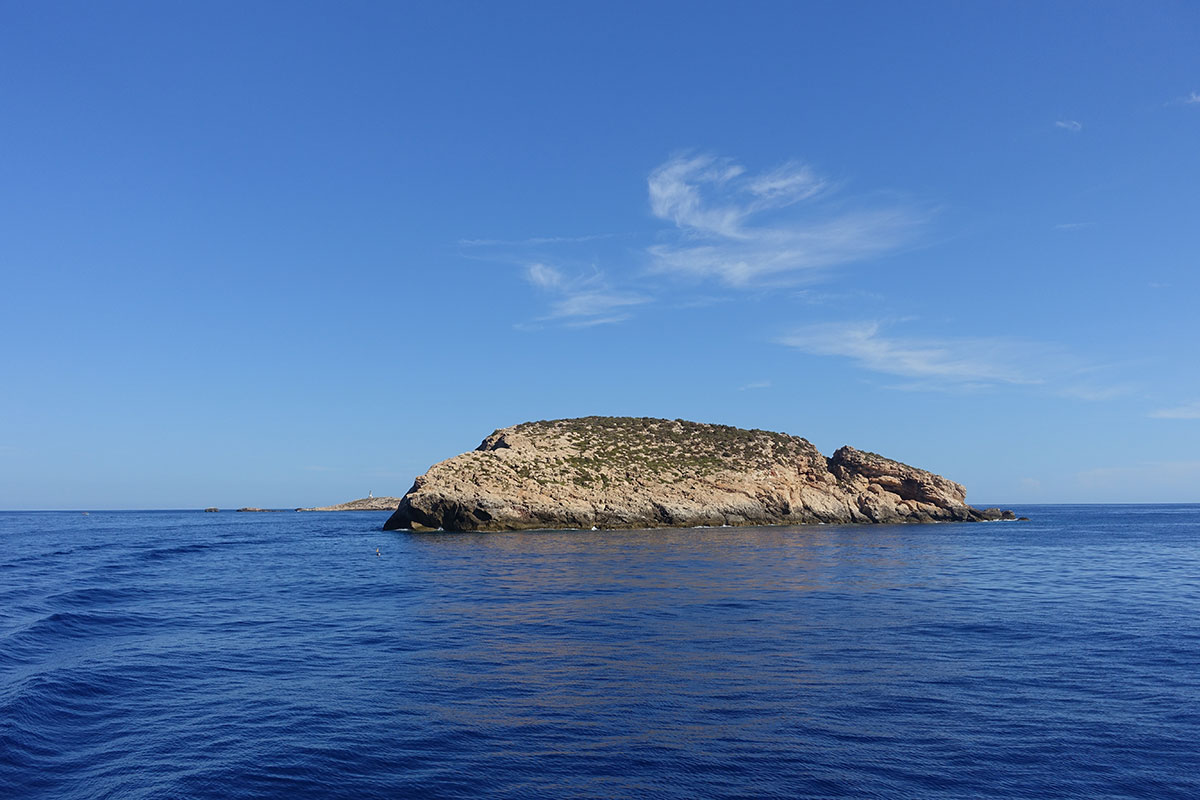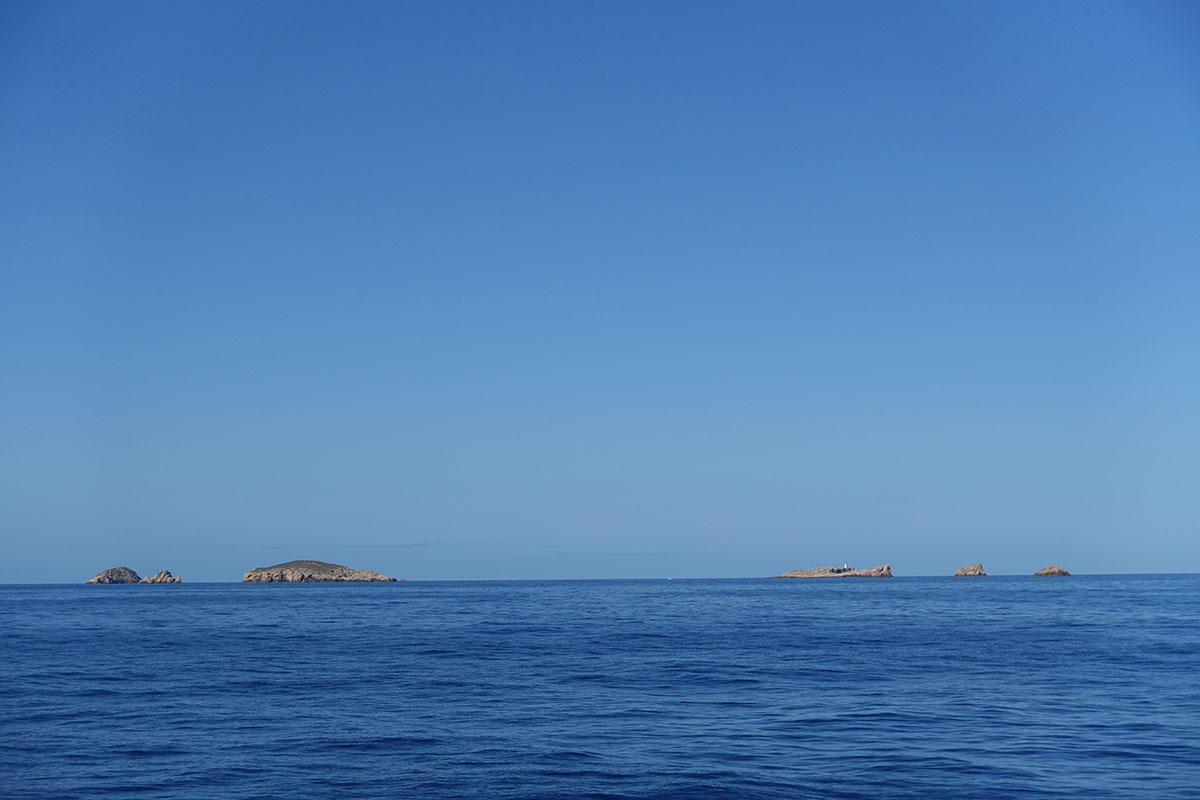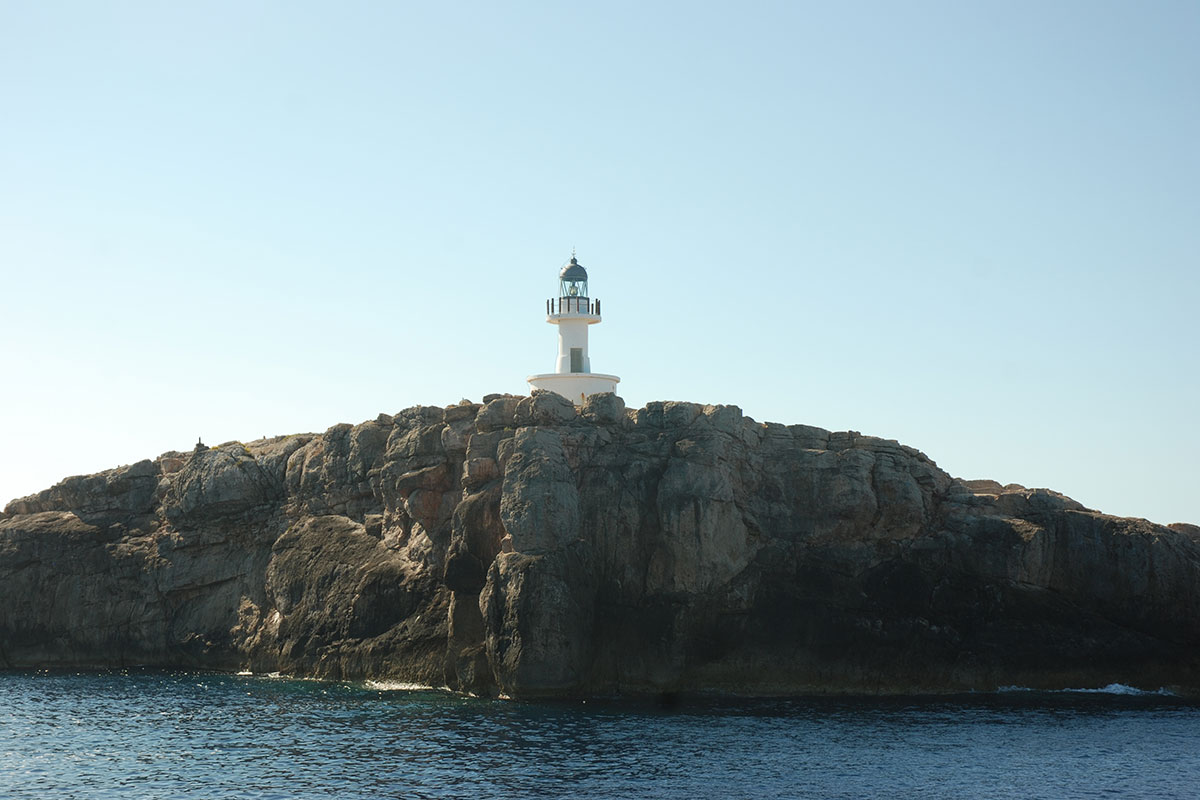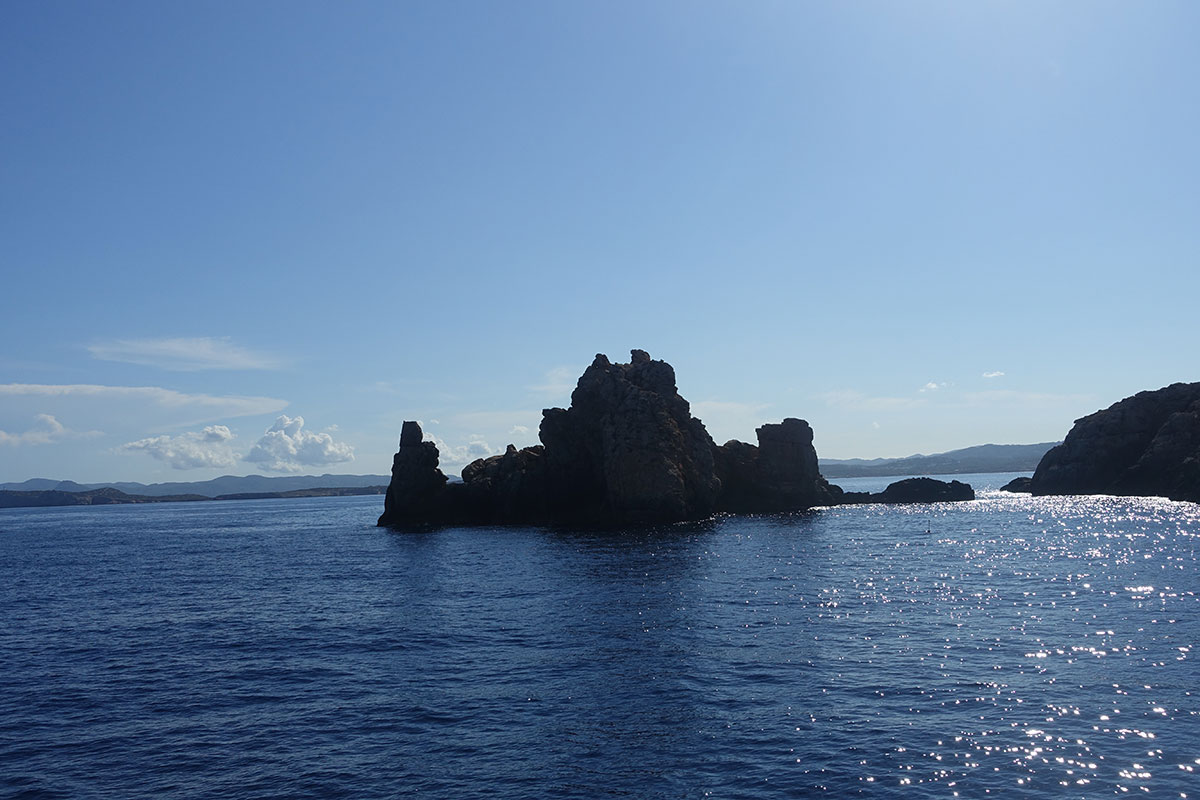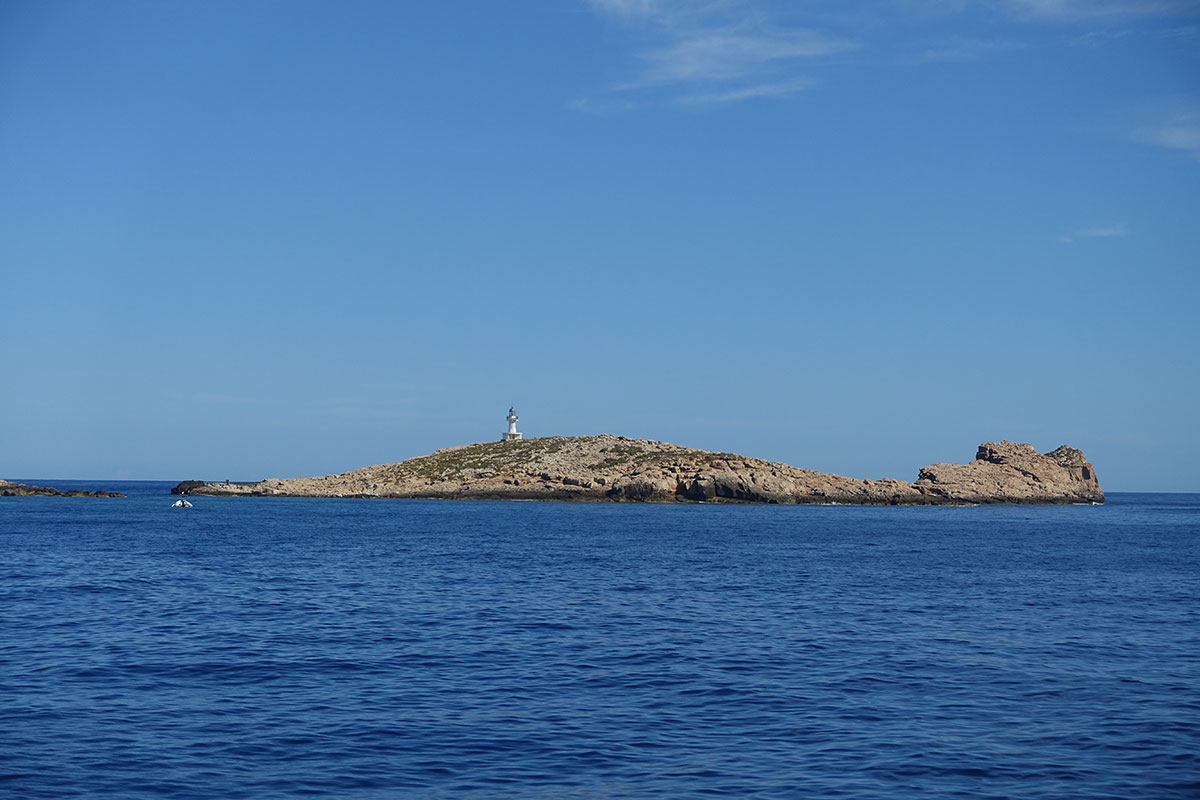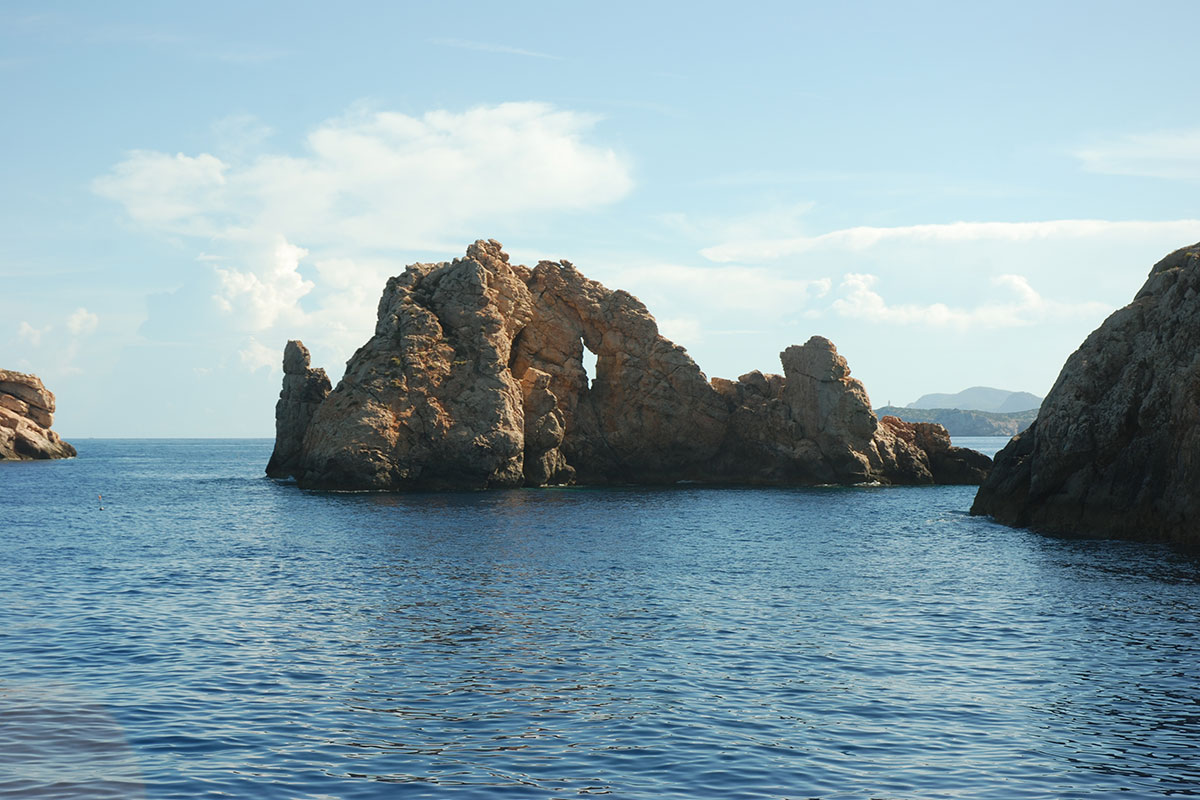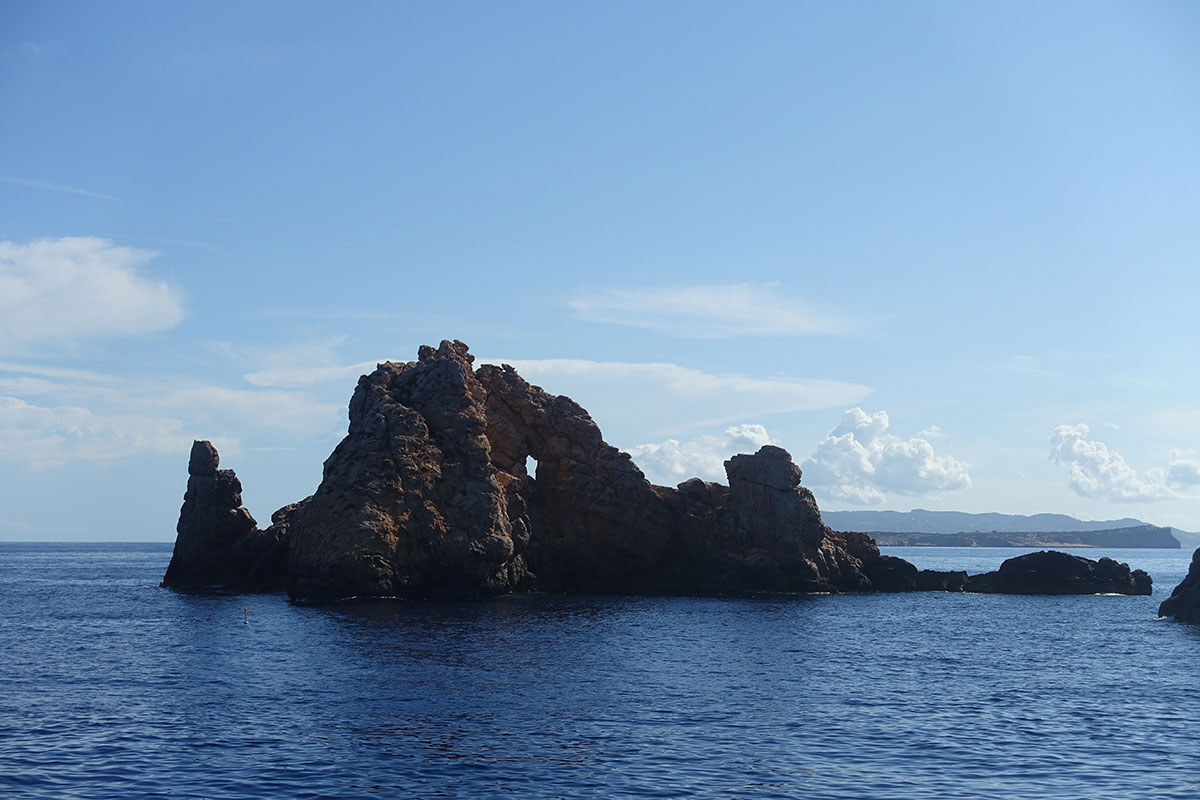Further to the west of Conillera, s’Illa des Bosc and s’Espartar, as you leave Ibiza, you come across ses Bledes, a small archipelago formed by na Gorra, es Vaixell, na Bosc, na Plana i es Esculls d’en Ramon, Tramuntana i es Cap Vermell, toponyms that for the most part refer to the shape of these isles. Many of them are home to a plant subspecies marcosii of Betta maritima, a wild chard (in Ibizan language bleda) which gives the group of islands their name.
Although they now belong to the Nature Reserve of els Illots de Ponent, they were formerly used as a testing ground for military exercises, using mortars, until the end of the last century and this had a huge impact on the marine environment. Even so, it has an extraordinary wealth of wildlife with three subspecies of a black lizard which is exceptional in Ibiza.
The greatest natural treasure however lies under the sea on the rocky seabed, where whole populations of chameleon seafan flourish (Paramuricea clavata), with their huge tree or fan like structures, at a depth of 35 metres. Some scientists maintain that it is probably the largest colony of this plant in the whole of the Balearic archipelago.
On the islet of na Plana you will find the third lighthouse in these nature reserves (the other two being in sa Conillera and es Vedrà). It rises 28 metres above sea level and flashes three white beams every 15 seconds. It first began signalling in 1927 operated by acetylene gas although in 1967 the power and height were increased and thus it was accorded the status of lighthouse.

